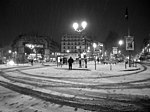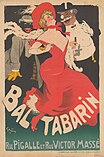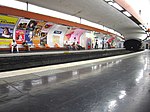New Moon (nightclub)
Buildings and structures demolished in 2004Cabarets in ParisDemolished buildings and structures in ParisFrench building and structure stubsJazz clubs in Paris ... and 4 more
LGBT drinking establishments in FranceLesbian barsLesbian culture in FrancePunk rock venues
New Moon was a Parisian nightclub, located at 66 Rue Pigalle (now Rue Jean-Baptiste Pigalle) in the Place Pigalle, that started in the late 19th-century as a headquarters for Impressionist artists. In the 20th century, it became a jazz club and then a lesbian cabaret, before converting to a well-known alternative rock club in the 1980s. It closed in 1995.
Excerpt from the Wikipedia article New Moon (nightclub) (License: CC BY-SA 3.0, Authors).New Moon (nightclub)
Place Pigalle, Paris 9th Arrondissement (Paris)
Geographical coordinates (GPS) Address Website Nearby Places Show on map
Geographical coordinates (GPS)
| Latitude | Longitude |
|---|---|
| N 48.8817 ° | E 2.3371 ° |
Address
Bio C' Bon
Place Pigalle 9
75009 Paris, 9th Arrondissement (Paris)
Ile-de-France, France
Open on Google Maps










